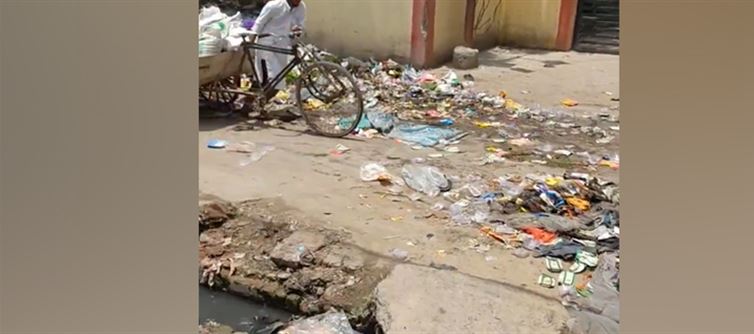
The footage, captured in one of the state's major cities, reveals a scene of utter disarray: streets littered with garbage, stagnant water pools, and makeshift barriers of bricks and debris. A stray dog navigates through the trash, while commuters on bicycles and motorcycles struggle to maneuver around the obstacles, highlighting the daily challenges faced by residents. This juxtaposition raises critical questions about the criteria and methodologies used to assess cleanliness, especially when the visual evidence suggests a different narrative.
It shows not just accumulated waste but also poorly maintained infrastructure, with open drains and potholed roads that pose health hazards and impede mobility. Such conditions are breeding grounds for diseases, particularly during the monsoon season when waterlogging exacerbates the situation. The presence of vehicles, including a relatively new car, navigating through this mess further illustrates the normalization of substandard living conditions, prompting citizens to question whether the "cleanest state" title is a result of skewed data or selective reporting.
This discrepancy calls for a reevaluation of how cleanliness is measured and reported under initiatives like the Swachh Survekshan. While rural areas might have seen improvements due to targeted interventions, urban centers appear to be lagging, possibly due to population density, inadequate waste management systems, and lack of public awareness or enforcement. The situation in Uttar Pradesh serves as a microcosm of a broader challenge facing India: balancing ambitious national goals with the practicalities of implementation across diverse regions. As the state grapples with this paradox, there is an urgent need for transparent assessments, community engagement, and sustainable solutions to bridge the gap between policy and practice, ensuring that the promise of a clean india is realized for all its citizens.




 click and follow Indiaherald WhatsApp channel
click and follow Indiaherald WhatsApp channel